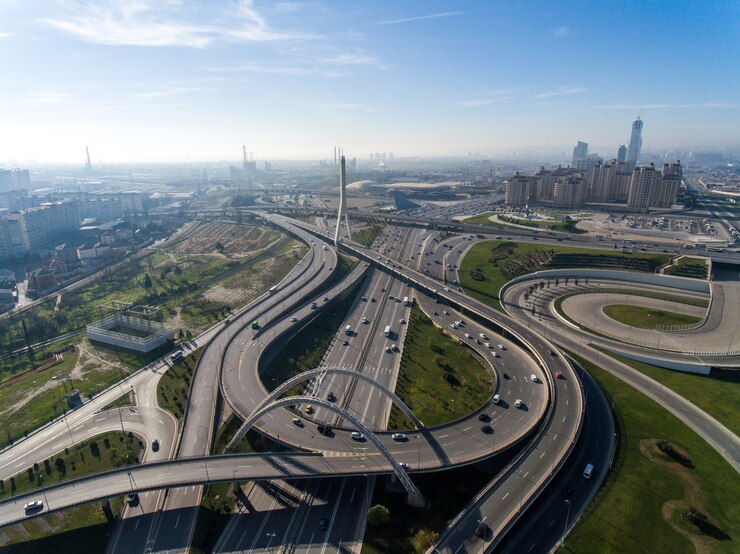– By Gagan Anand
The unveiling of the over Rs 10 lakh crore worth investments spread across nearly 14,000 industrial and infrastructure development projects in Uttar Pradesh by Prime Minister Narendra Modi during the recently concluded Ground Breaking Ceremony (GBC@4) held on February 19 and 20 in Lucknow, was path breaking in more ways than one. It has firmly established Uttar Pradesh as an investor friendly destination providing the much-needed safety, governance and transparency to investors and has helped the State emerge as the 3rd largest economy of India, which is in stark contrast to it being considered a “backward state” even around 7-8 years back.
So, what has changed in the last 8 years? It is to be noted that industrial and infrastructure development has played a pivotal role in transforming India into a flourishing and rapidly developing country. With its direct nexus to the rate of economic growth, development of infrastructure has been given due importance at a national level by way of its inclusion in consecutive Union and State budgets. While infrastructure development has been rampant across all nooks and corners of India, a marvellous spirit of this growth may be observed in the State of Uttar Pradesh, which has gradually emerged to be an infrastructure and industrial development leader and thereby, the 3rd largest State economy of the country.
With stellar specimens of infrastructure like the Jewar International Airport and the Ram Mandir related numerous projects in Ayodhya, Uttar Pradesh has attained commendable success in terms of attracting investments and facilitating development through Public-Private-Partnership (PPP) mode.
One of the noteworthy things in the development story of Uttar Pradesh is the State’s commitment towards ensuring sustainable development and curbing the adverse effects of industrialisation by focusing on renewable energy. Having realized that construction and infrastructure development also contributes towards increasing pollution levels, which may, in turn, adversely impact the ability to attain the net zero carbon emission goals, the UP government has taken active measures in terms of inclusion of approximately 182 renewable energy sector projects within the long-term development plans of the State. One such measure will be the setting up of solar panels in the 30 hectares area surrounding the Jewar International Airport, wherein, the aviation project, in itself will be an eco-friendly facility.
It is manifest to understand that during the preceding budget speech, the Hon’ble Union Finance Minister had called for the States to adopt 7-point measures, wherein one such measure was ‘green-growth’ across sectors including that of the construction sector. These 7 pointers were stated to be an essential catalyst for the achievement of Amrit-Kaal. The UP Government is efficiently adopting these 7 measures by working towards green-growth and including renewable sector projects in its infrastructural development plan. However, one consideration, which may be highlighted is whether the development of renewable energy sector projects will curb the evil of the construction industry, which is indeed one of the largest solid waste producers of any economy. Thus, at this juncture, it may become necessary to showcase the benefits of PPP projects, where this unique partnership between government and private sector participants may work to the benefit of the environment and enhance the focus of the industry towards the utilisation of sustainably viable methods of construction.
In such acceleration, PPP projects may take the form of an underdog, owing to their ability to efficiently allocate risk between public and private entities. Needless to mention that PPP projects may also aid in ensuring appropriate budget allocation towards the inclusion of sustainable methods for construction, thereby bringing proficient realisation towards the goals set by the Indian Administration from time-to-time. Resultantly, PPP projects may exhibit paramount importance in bringing effect to not only the Indian ambition, but will also bring the country to the forefront of sustainability with the realisation of the 17 Sustainable Development Goals (SDGs), which were adopted by the United Nations in the year 2015. One of the goals within 17 SDGs seeks to build resilient infrastructure, promote inclusive and sustainable industrialization and foster innovation. Here, it may again be appropriate to mention that the state of Uttar Pradesh has taken ample advantage of this opportunity and has ranked beautifully in a range of successful PPP projects, including the state-of-the-art Yamuna expressway. One of the key initiatives of Uttar Pradesh has been its construction generated solid waste management facilities, which is again one of the many innovative and necessary steps taken by the government towards attaining a rather leading role over all economies, where a strategic objective of the state administration is to send the ‘refuse-derived fuel’ material to the ‘waste to energy PPP project’.
It is indeed admirable, that the development of the State of Uttar Pradesh has been progressing on a positively aligned path, where the steps taken by the administration may be determined to be absolutely on point. Whether in terms of the FDI Policy 2023, the development of milestone projects on PPP mode, and a distinctive focus on the inclusion of renewable energy and sustainable growth, the UP administration has, in true sense, been the torch bearer for the other Indian States and has justified its showcasing during the unveiling of projects.
(Gagan Anand is the Advocate (India) & Solicitor (England & Wales), and Managing Partner, Legacy Law Offices LLP.)
(Disclaimer: Views expressed are personal and do not reflect the official position or policy of Financial Express Online. Reproducing this content without permission is prohibited.)
